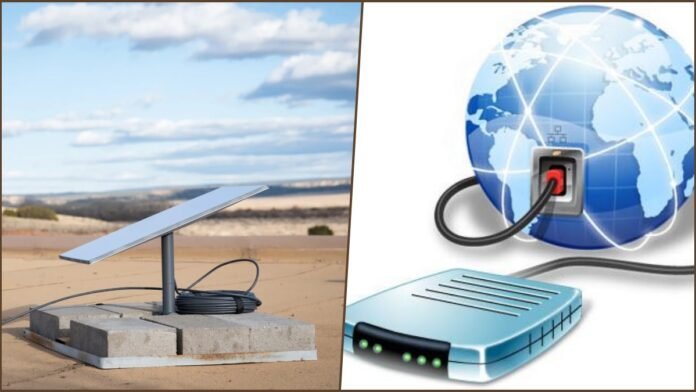
New Delhi: Starlink is fundamentally different from traditional broadband because it uses satellites, not cables, to deliver internet making it uniquely valuable for India’s remote and underserved regions. It will not replace fiber or 5G in cities but will be transformative for rural connectivity, disaster response, and bridging India’s digital divide.
Fundamental Difference Between Broadband and Starlink
Traditional Broadband (fiber, cable, DSL) and Starlink (satellite internet) differ fundamentally in how they deliver internet to users:
| Feature | Traditional Broadband | Starlink (Satellite Internet) |
|---|---|---|
| Technology | Wired (fiber optic, cable, DSL) | Wireless via low Earth orbit (LEO) satellites |
| Infrastructure | Physical cables to homes/offices | Satellite dish communicates with orbiting satellites |
| Coverage | Urban, suburban, some rural areas | Nearly anywhere with clear sky view |
| Latency | Very low (5–20 ms, fiber) | Low (20–70 ms), higher than fiber but better than old satellite internet |
| Speed | Up to 1 Gbps+ (fiber), 100–300 Mbps (cable/5G) | 50–250 Mbps typical, up to 200+ Mbps in some areas |
| Reliability | High, but depends on local infrastructure | Can be affected by weather/obstructions |
| Installation | Professional, sometimes complex | Self-install Starlink kit (dish, router) |
| Best Use Case | Cities, towns with existing networks | Remote/rural areas, places with no wired options |
Key Technical Difference
- Broadband uses ground-based infrastructure (fiber/cable lines) for data transmission.
- Starlink uses a constellation of thousands of LEO satellites, beaming internet directly to a user’s dish, bypassing the need for local cable infrastructure.
How Useful is Starlink in India?
Starlink’s utility in India is highly context-dependent:
Where Starlink Excels
- Rural and Remote Areas:
Starlink is a game-changer for villages, hilly regions, islands, border areas, and other places where laying fiber or setting up mobile towers is difficult or uneconomical. It can bring high-speed internet to places that have never had reliable connectivity. - Disaster Recovery & Emergency Use:
Because it doesn’t rely on ground infrastructure, Starlink can restore connectivity quickly after natural disasters or in conflict zones. - Direct-to-Consumer Model:
Users can buy and set up their own Starlink kit, skipping local ISPs and complicated installations.
Limitations in India
- Urban Areas:
In cities with robust fiber or 5G, Starlink is unlikely to compete on price or speed. Wired broadband is faster, cheaper, and more reliable for most urban users. - Obstructions & Weather:
Performance can drop in areas with tall buildings, trees, or frequent bad weather. The dish needs a clear view of the sky. - Cost:
Expected pricing is around ₹3,000/month with a one-time hardware cost of ₹30,000–₹33,000, which is higher than most Indian broadband plans. - Limited Initial Capacity:
Starlink’s early rollout will support only 30,000–50,000 users at a time, mostly in select areas, but is expected to expand as more satellites and ground stations come online.
Who Should Consider Starlink in India?
- Residents of remote/rural areas with poor or no broadband options.
- Institutions (schools, hospitals, government offices) in underserved regions.
- Businesses operating in geographically challenging locations.
- Emergency services and disaster response teams.
Summary Table: Starlink vs Traditional Broadband
| Factor | Starlink Satellite Internet | Traditional Broadband (Fiber/Cable/DSL) |
|---|---|---|
| Delivery Method | LEO satellites to user dish | Underground/overhead cables |
| Coverage | Nationwide, especially remote areas | Urban/suburban, some rural |
| Speed | 50–250 Mbps (sometimes higher) | 50 Mbps–1 Gbps+ (fiber), 100–300 Mbps (cable) |
| Latency | 20–70 ms | 5–20 ms (fiber), 20–40 ms (cable) |
| Reliability | Weather/obstruction sensitive | Highly reliable if infrastructure is good |
| Cost | ₹3,000/month + ₹30,000–₹33,000 hardware | ₹500–₹1,500/month, minimal setup fee |
| Best For | Rural/remote, disaster recovery | Urban/suburban, high-density areas |
Advertisement

















































